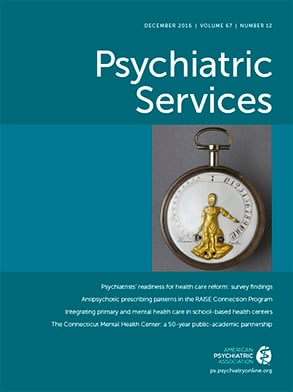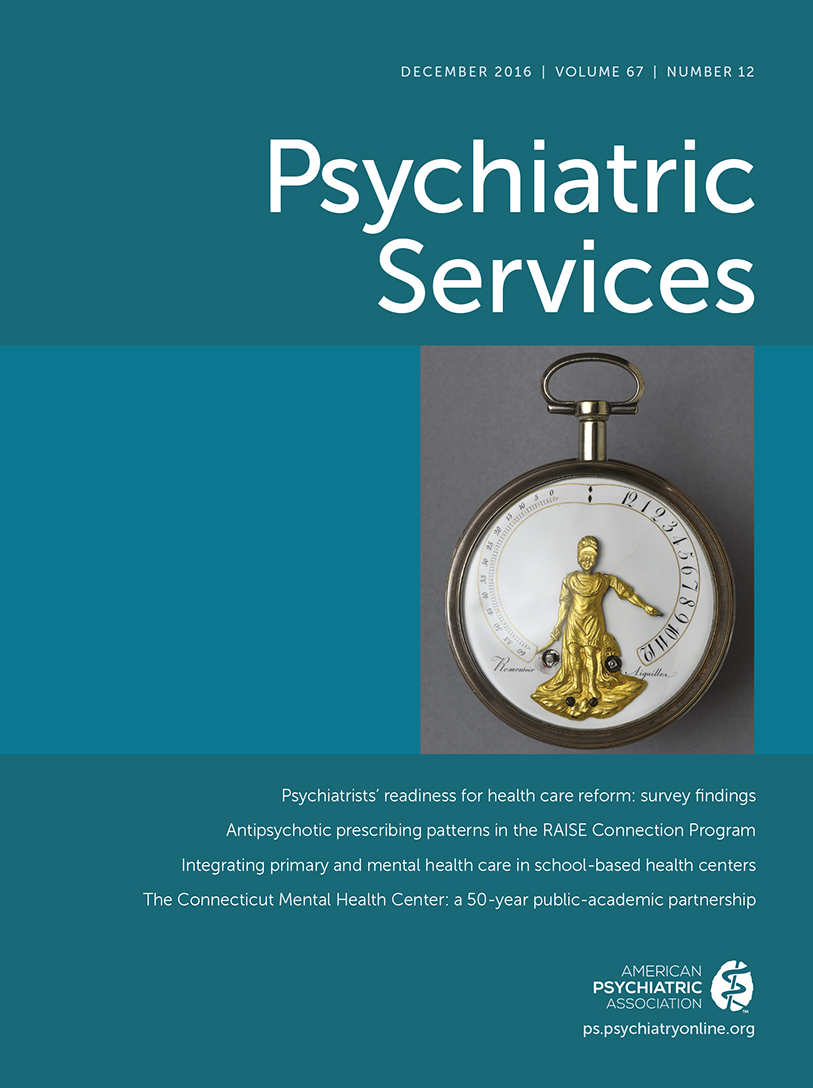The current state of inpatient care for persons with severe psychiatric disorders “may diminish opportunities for a sustained recovery,” according to Glick and colleagues (
1). These authors highlighted the challenge confronting persons with severe psychiatric disorders (defined for the purposes of this essay as individuals needing at least one hospitalization), as well as society’s ethical obligations to provide them with appropriate care, and proposed a set of clinical guidelines to encourage better care for these individuals.
In this Open Forum, we advocate additional approaches for improving both general medical and mental health outcomes of services for persons with severe psychiatric disorders. These approaches generally involve changes to the way mental health care is reimbursed together with the way in which information is exchanged between health professionals. We focus specifically on persons with severe psychiatric disorders, many of whom have other chronic conditions, such as diabetes.
New Payment Options
The payer coverage process has restricted inpatient mental health services to persons who are suicidal or who are in a very significant emotional crisis. As stated by Glick and others (
1), “Driven by financial pressures, the sole focus of psychiatric inpatient treatment has become safety and crisis stabilization.” The system of payment must be restructured to encourage service use by individuals and to fund better treatment alternatives to short, repetitive cycles of crisis management (
2). Although there is a lack of evidence about precisely who would benefit (and how often) from an inpatient stay, there is a belief that the bias against inpatient hospitalization negatively affects longer-term outcomes and promotes fractured care, particularly for those with severe psychiatric conditions. The measurement of benefit should combine both short-term financial and clinical outcomes—such as readmission, emergency department (ED) visits, and total admissions—and long-term outcomes, such as mental health status, employment, school completion, and better control of chronic general medical conditions.
Until very recently, in an effort to cut costs, many states had carved out mental health services from Medicaid programs. Recent research on these carve-out programs almost completely ignored the question of outcomes and focused exclusively on whether the programs reduce the amount of money spent on the population of persons with mental illness (
3). We argue that simply capitating mental health services, as has occurred until very recently, often results in poor care for individuals with severe psychiatric conditions (
4). The movement toward combining payment for mental health treatment with other health care services is a necessary first step. However it does not address how to best incentivize better outcomes for individuals with severe psychiatric conditions.
We also believe that capitation rates and fee-for-service (FFS) payments must be adjusted upward to encourage managed care organizations, medical homes, and FFS providers to take on patients with severe psychiatric conditions, who often have coexisting medical conditions. An upward adjustment is warranted despite the absence of traditional measures of payment-to-cost ratios indicating its necessity. For this population, the costs are severely underestimated because of chronic undertreatment and avoidable adverse health outcomes. Increases in mental health payments should be provided under a single capitation rate covering all services, including general medical services. How much of an increase should be considered in the capitation? Although the answer to this critical question is primarily driven by politics, an online supplement provides a suggested payment calculation.
The increase in the capitation rate should be reduced after the first year and completely removed in year 2. Payments after the second year should be based on data about the quality of outcomes and the average payment for population mix. Payers such as New York and Texas have already begun providing financial incentives to managed care organizations and other organizations that are paid under capitation to decrease potentially preventable general medical and mental health events, including potentially preventable ED visits and readmissions (
5,
6). Payers should also create financial incentives (both upside and downside) for hospitals, which are typically paid under per-diem or FFS arrangements, to lower ED visits and readmissions.
Because many patients who are hospitalized for a psychiatric condition receive little care after hospital discharge, process measures, such as a minimal threshold of office visits or the mean of office visits, should initially also be tied to payment. We recommend that pharmaceutical fill rates and outpatient therapy services be encouraged, via payment incentives, at the outset after hospital discharge, especially for certain high-risk patients and for patients undergoing partial hospitalization or intensive outpatient care.
Financial incentives provided through payment tools, such as episodic payment (defined as hospitalization plus incentives to maximize the effectiveness of postacute care) and attention to preventable events, are necessary but not sufficient to improve care for individuals with a severe mental disorder. To improve the evidence base, states have taken the lead not only in encouraging coordinated care but also in providing detailed performance information to providers and encouraging them to work together in collaboration to improve outcomes, such as greater treatment adherence, fewer readmissions and ED visits, and return to work (
7).
States have also taken an active role in collecting and improving the risk adjustment and outcomes metrics for individuals with severe mental disorders (
8). Improved risk adjustment is a critical part of any systematic effort to improve care for individuals with a severe psychiatric condition. The improved risk adjustment and outcomes metrics should include not only diagnoses obtained from traditional databases but also information about functional or mental health status, pharmaceuticals prescribed, educational attainment, homelessness, employment, social support networks, and incarceration history (
9,
10).

